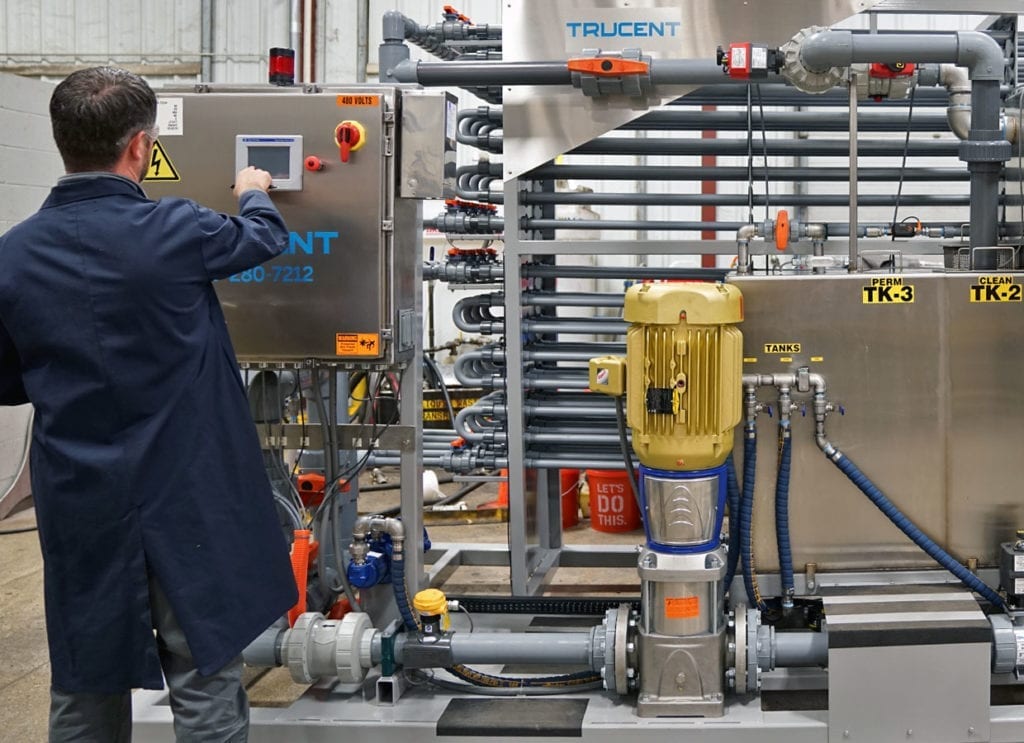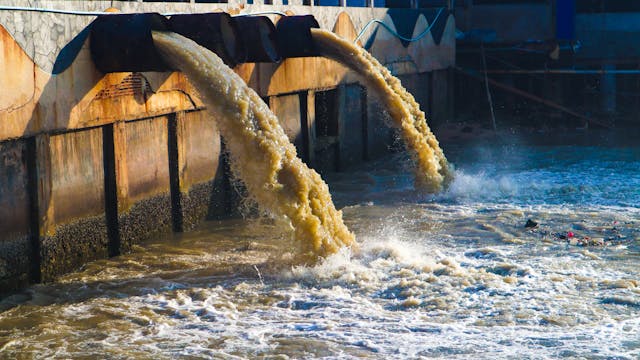Industrial Waste Water Treatment-- Effective Waste Monitoring for Factories
Industrial Waste Water Treatment-- Effective Waste Monitoring for Factories
Blog Article
Trick Strategies in Industrial Waste Water Therapy Procedures
The therapy of commercial wastewater is a crucial aspect of environmental monitoring, including a range of methods made to mitigate the impact of pollutants. Improvements in technologies such as membrane filtration and progressed oxidation processes use ingenious remedies for improving treatment effectiveness.
Physical Treatment Techniques
Just how successfully can physical treatment methods deal with the complexities of industrial wastewater? Physical therapy approaches play an essential function in the preliminary phases of wastewater monitoring, focusing mainly on the elimination of solids and big particulates. Techniques such as purification, sedimentation, and flotation protection are necessary for minimizing the concentration of suspended solids, thus boosting the effectiveness of subsequent therapy procedures.
Sedimentation entails the gravitational settling of solids, enabling for the separation of heavier materials from the wastewater. This method is particularly effective in making clear water before biological or chemical therapies. Purification, on the other hand, uses different media to record particulate matter, making sure that smaller sized impurities are removed. This strategy can be tailored to suit various types of commercial effluents, creating more clear effluent streams.
In addition, flotation techniques, which utilize air bubbles to lift put on hold solids to the surface area for elimination, are reliable in treating wastewater with high concentrations of fats, oils, and greases. On the whole, physical therapy approaches offer as a crucial primary step in the extensive administration of industrial wastewater, ensuring that the lots on succeeding therapy stages is lessened and improving overall therapy efficiency.
Chemical Treatment Methods
While physical treatment methods lay the foundation for reliable wastewater monitoring, chemical therapy methods are essential for attending to the much more complicated pollutants frequently found in commercial effluents. These techniques make use of numerous chemical agents to speed up, neutralize, or oxidize damaging substances, ensuring a more extensive removal of pollutants.
One common method is coagulation and flocculation, where chemical coagulants such as aluminum sulfate or ferric chloride are added to advertise the aggregation of put on hold bits. This procedure boosts solid-liquid splitting up, decreasing turbidity and improving water high quality. Additionally, neutralization processes are employed to adjust the pH of wastewater, utilizing bases or acids to reduce the effects of acidic or alkaline streams, respectively.
Oxidation-reduction responses play an essential duty in degrading organic pollutants and virus. Chemical oxidants like ozone, hydrogen, or chlorine peroxide are used to damage down intricate organic substances, making them less hazardous or much more eco-friendly. Advanced oxidation procedures (AOPs) integrate several oxidation methods to improve pollutant elimination effectiveness.
Organic Treatment Procedures
The effectiveness of wastewater therapy is considerably improved by organic treatment procedures, which harness the natural metabolic activities of microorganisms to decay organic issue and eliminate pollutants. Industrial Waste Water Treatment. These procedures mainly involve cardiovascular and anaerobic food digestion, each customized for particular kinds of wastewater
Cardio therapy procedures use oxygen to sustain microbial development, promoting the breakdown of organic toxins into carbon dioxide and water. Typical approaches include triggered sludge systems, where aeration containers help with the mixing of wastewater with bacteria, and trickling filters, which motivate biofilm development on media surface areas.
Conversely, anaerobic therapy procedures happen in the absence of oxygen, making use of anaerobic microorganisms to decompose organic issue, resulting in biogas manufacturing, a renewable resource source. Anaerobic digesters are frequently utilized in industrial settings for this purpose, successfully reducing the quantity of sludge while creating beneficial biogas.
The choice of a biological therapy approach depends on wastewater qualities, therapy goals, and regulative requirements. The combination of biological procedures in wastewater therapy not just enhances toxin removal effectiveness however also advertises sustainability by lessening chemical use and sustaining resource recuperation.
Advanced Oxidation Processes

Typical AOP strategies consist of Fenton's ozonation, photocatalysis, and reagent. Fenton's reagent, a mix of check my reference hydrogen peroxide and ferrous iron, catalyzes the formation of hydroxyl radicals, making it effective for dealing with see this page wastewater including phenolic substances and various other stubborn materials.
AOPs offer numerous benefits, including lowered sludge production and the ability to treat wastewater with high concentrations of organic pollutants. The application of AOPs calls for cautious factor to consider of functional parameters and cost-effectiveness, making certain that these sophisticated techniques are properly incorporated right into existing wastewater treatment systems.
Membrane Layer Filtration Technologies

Microfiltration is efficient for eliminating suspended microorganisms and solids, while ultrafiltration targets smaller sized natural molecules and viruses. Nanofiltration links the void in between ultrafiltration and reverse osmosis, successfully getting rid of divalent ions and organic substances. Reverse osmosis supplies the highest degree of purification, utilized primarily for desalination and eliminating mono-valent ions.
Membrane layer technologies supply countless advantages, consisting of reduced energy intake contrasted to typical treatment techniques, modular style for scalability, and the potential for water healing and reuse. Challenges such as membrane layer fouling and the demand for normal maintenance should be resolved to make sure system efficiency. In general, membrane layer filtration innovations represent a vital element of contemporary commercial wastewater treatment techniques, promoting sustainability and source preservation in water monitoring.
Verdict
In verdict, commercial wastewater therapy employs a varied variety of methods, consisting of physical, chemical, biological, and progressed techniques. Proceeded improvements in these methodologies will certainly further boost the effectiveness and efficiency of wastewater therapy procedures in commercial setups.
The treatment of industrial wastewater is an essential aspect of environmental administration, involving a variety of strategies developed to minimize the effect of pollutants.How efficiently can physical treatment techniques resolve the intricacies of commercial wastewater?Advanced oxidation you could try this out procedures (AOPs) stand for an advanced approach in industrial wastewater therapy, made to properly weaken natural contaminants that are frequently resistant to traditional therapy methods (Industrial Waste Water Treatment).In conclusion, industrial wastewater therapy uses a varied range of techniques, consisting of physical, chemical, biological, and progressed approaches. Continued developments in these methodologies will further enhance the performance and effectiveness of wastewater therapy procedures in commercial setups
Report this page